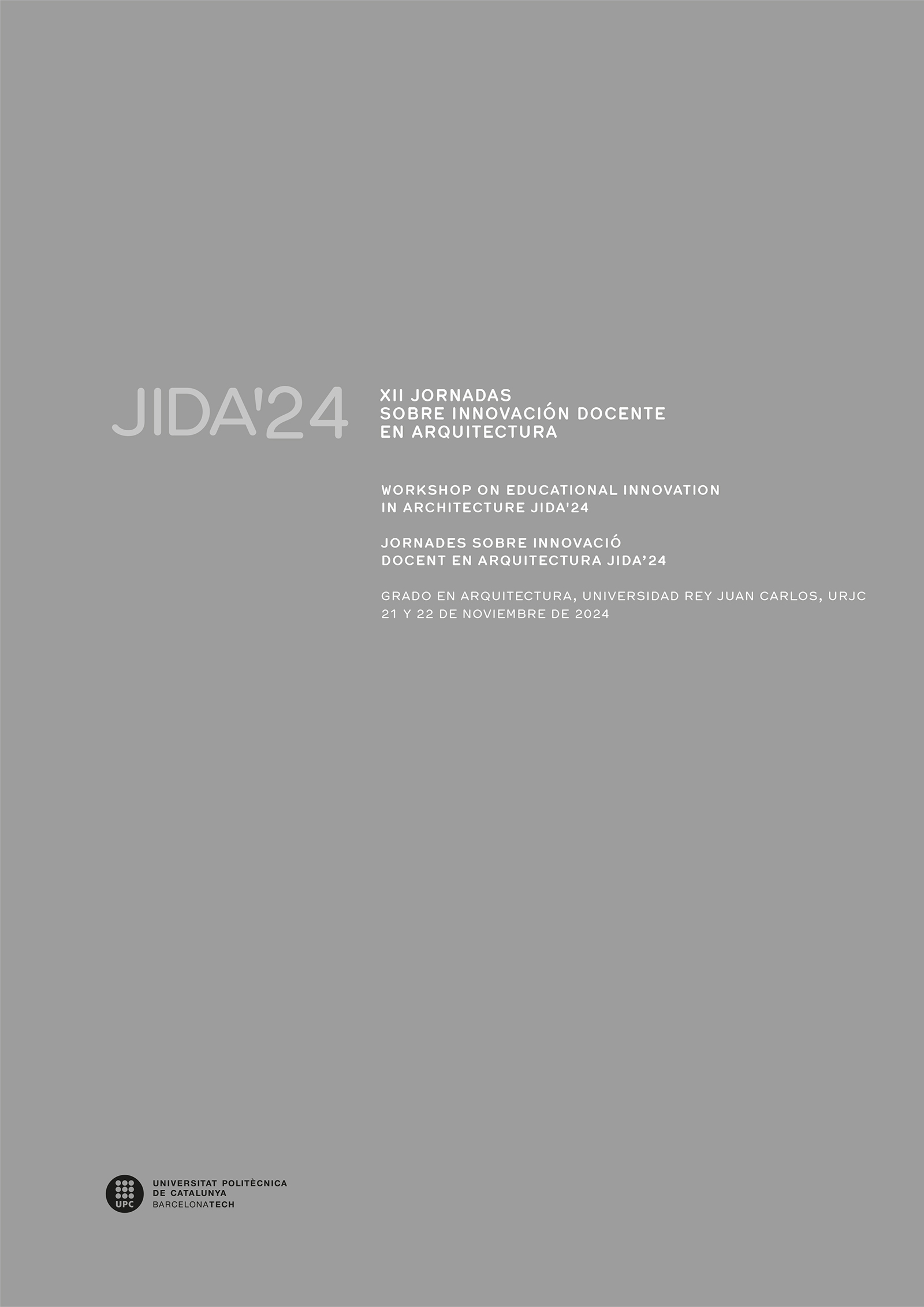Learning with Artificial Intelligence: application in an operative mapping course
DOI:
https://doi.org/10.5821/jida.2024.13211Keywords:
artificial intelligence, ChatGPT, cartography, teaching innovation, GISAbstract
Artificial Intelligence has abruptly burst into the daily life of society and the reality of many sectors has been transformed, almost run over, by this technology almost without time to react, with consequences that are difficult to quantify today. Teaching is not exempt from this storm and research is needed to be able to use this powerful tool in an appropriate way. This paper presents the teaching innovation experience 'Learning with Artificial Intelligence: application in a cartography classroom', which encourages the development of personal critical thinking, of great importance for learning cartographic thinking and algorithmic logic; and introduces Artificial Intelligence in the procedural resolution of the challenges posed in the classroom in the use of GIS, giving students greater autonomy in a context characterized by uncertainty and strong changes in the use of tools and processes.
References
Arribas-Bel, Daniel. 2014. «Accidental, open and everywhere: Emerging data sources for the understanding of cities». Applied Geography 49 (mayo):45–53. https://doi.org/10.1016/j.apgeog.2013.09.012.
Bambó-Naya, Raimundo, Miguel Sancho-Mir, y Isabel Ezquerra. 2019. «El mapa y el territorio. Cartografías prospectivas para una enseñanza flexible y transversal». En https://doi.org/10.5821/jida.2019.8294.
Buhigas, María, y Pau Sola-Morales. 2022. «El urbanismo y los datos: oportunidades, riesgos y límites». ZARCH, no 19, 14–27. https://doi.org/10.26754/ojs_zarch/zarch.2022197406.
Corner, James. 1999. «The Agency of Mapping: Speculation, Critique and Invention». En Mappings, editado por Denis Cosgrove, 214–52. London: Reakton Books.
Eager, Bronwyn, y Ryan Brunton. 2023. «Prompting Higher Education Towards AI-Augmented Teaching and Learning Practice». Journal of University Teaching and Learning Practice 20 (5). https://doi.org/10.53761/1.20.5.02.
García-Pérez, Sergio, Pablo Martínez-Díez, y Mar Santamaría-Varas. 2022. «Granularity, consistency and scalability in morphological studies. On some recent works by Dani Arribas-Bel and Martin Fleischmann». ZARCH: Journal of interdisciplinary studies in Architecture and Urbanism, no 19 (diciembre), 186–97. https://doi.org/10.26754/ojs_zarch/zarch.2022197412.
Geddes, Patrick. 1915. Cities in Evolution. An introduction to the town planning movement and to the study of civics. London: Williams. https://doi.org/10.2307/3159745.
Jorge-Huertas, Virginia de, y Ana Isabel Rodríguez-Aguilera. 2023. «Dibujar y cartografiar: un marco teórico para arquitectura y paisajismo». En XI Jornadas sobre Innovación Docente en Arquitectura (JIDA’23), Escuela Técnica Superior de Arquitectura de Granada, 16 y 17 de Noviembre de 2023: libro de actas, 208–22. Barcelona: Universitat Politècnica de Catalunya. Iniciativa Digital Politècnica. https://doi.org/10.5821/jida.2023.12236.
Llopis Verdú, Jorge, Juan Serra Lluch, y Ana Torres Barchino. 2019. «Digital diagrams and urban and territorial cartography. Contemporary schematic depictions of immateriality». Disegnarecon 12 (22): 12.1-12.18. https://doi.org/10.20365/disegnarecon.22.2019.12.
Lobato Valdespino, Juan Carlos, y Jorge Humberto Flores Romero. 2023. «Más allá del estado estable: diseño discursivo como práctica reflexiva asistida por IA». En XI Jornadas sobre Innovación Docente en Arquitectura (JIDA’23), Escuela Técnica Superior de Arquitectura de Granada, 16 y 17 de Noviembre de 2023: libro de actas, 102–14. Barcelona: Universitat Politècnica de Catalunya. Iniciativa Digital Politècnica. https://doi.org/10.5821/jida.2023.12146.
Paez, Roger. 2019. Operative Mapping. Maps as Design Tools. New York: Actar.
Serrano-Estrada, Leticia, Almudena Nolasco Cirugeda, y Pablo Martí Ciriquián. 2022. «Planificación urbana 4.0: datos geolocalizados de redes sociales para la intervención en la ciudad». ZARCH: Journal of interdisciplinary studies in Architecture and Urbanism 19. https://doi.org/10.26754/ojs_zarch/zarch.2022196903.
Temes Cordovez, Rafael R., ed. 2020. SIG Revolution. Ordenación del territorio, urbanismo y paisaje. Madrid: Síntesis.
Unwin, Raymond. 1909. Town Planning in Practice. London: T. Fischer Unwin.



















